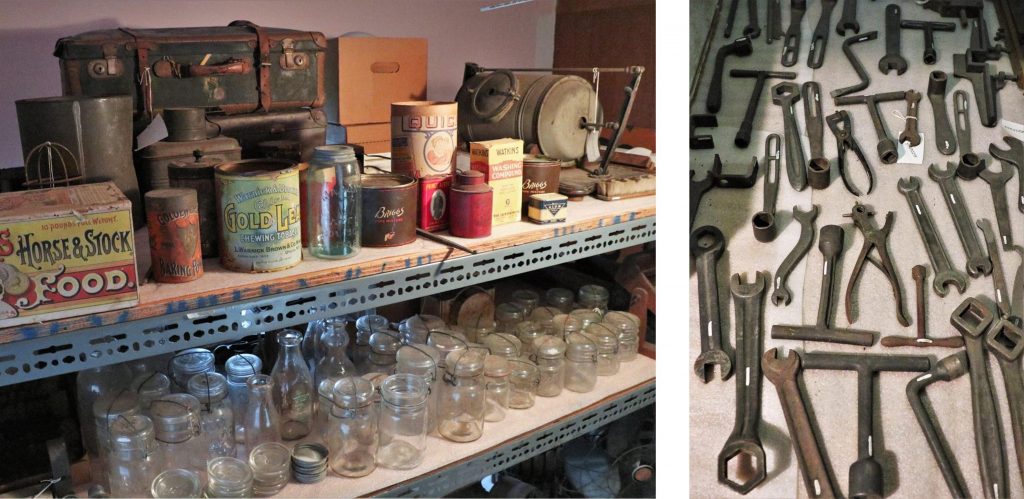Note from the Executive Director
Kajsa Harley
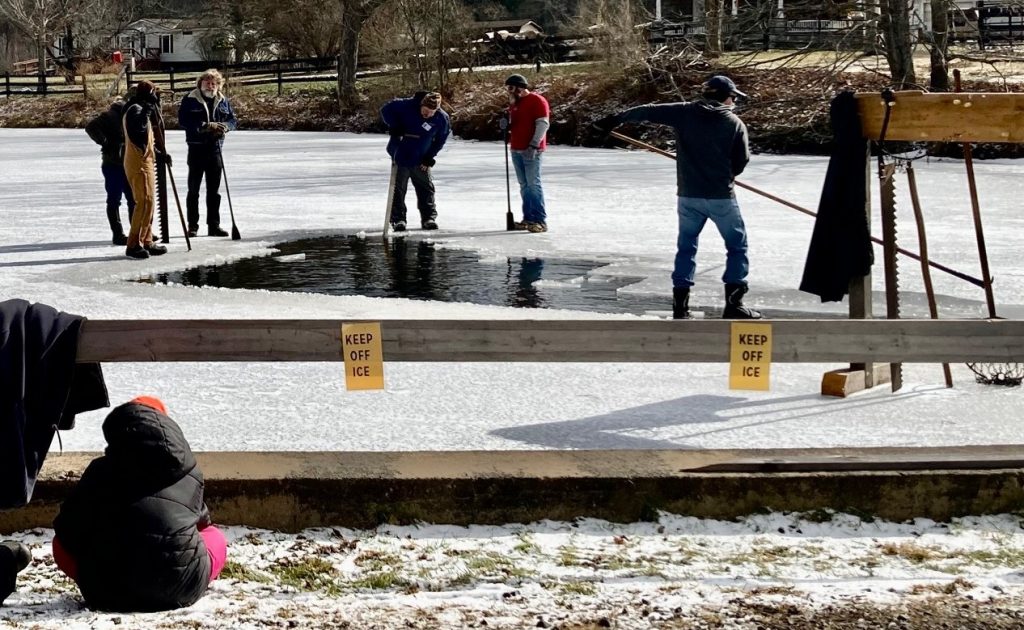
Greetings from East Meredith! While we wait for the weather to continue towards spring, Hanford Mills staff have been busy working with students in their classrooms, completing projects with our historic objects, harvesting ice, and planning for our 50th anniversary season.
Thanks to all of you who joined us for the 2023 Ice Harvest! The cold snap at the end of January allowed the pond to grow just enough ice for us to harvest this year. Just over 300 people joined us on February 10 and 11 in our return to harvesting ice after two years of cancelations due to COVID and poor weather and site conditions. The winter temperature swings this year meant that we had an extremely short window for harvesting, so we’re delighted to have the ice house full of blocks. We look forward to inviting you back to the site for our 2023 season starting on May 17! Stay tuned for more updates as we confirm our schedule of programs and events.
Celebrating HMM’s 50th Anniversary in 2023
Patrick Dewey, Public Relations Coordinator
In 1973, 127 years after Jonathan Parris first built the sawmill in East Meredith, New York State chartered the historic mill site as a museum. We are getting ready for our 50th anniversary season, in which museum staff will be celebrating the history of the museum and all of the people who have contributed to the development of the site and the museum.
We will be sharing stories related to the museum’s history throughout this anniversary season, including a new exhibit in the Feed Mill and longer articles in this email newsletter. Throughout the year, we will continue to share weekly social media posts highlighting 50 years of history, We would also love to hear and share your stories! If you have a memory related to the museum (or the mill site before it became a museum), please share it with us. You can use this Google Form to share information and upload images: bit.ly/HMM50th You can also contact Kajsa Harley at [email protected]
We look forward to celebrating with you in 2023!
50th Anniversary and Restoration Work
Kevin Jensen, Mill & Collections Specialist
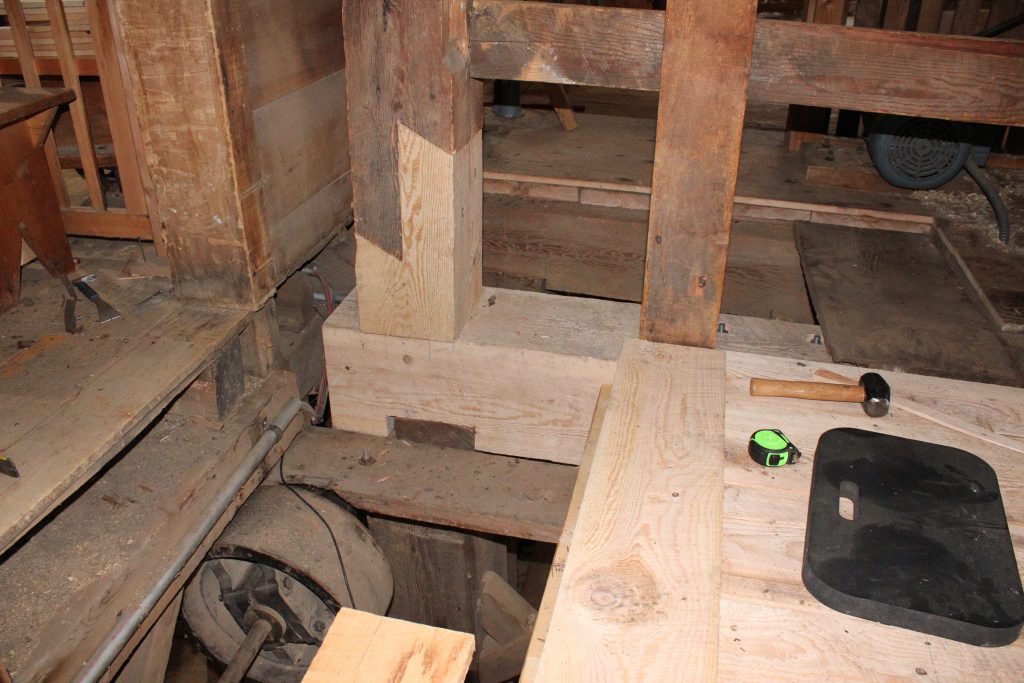
In 2023, Hanford Mills Museum is celebrating its fiftieth anniversary as a museum. Although the museum has seen many changes over the past five decades, one constant has been the continual restoration, repair, and maintenance of its unique collection of historic structures and machinery. In recent years, the museum has undertaken an ambitious array of stewardship projects. Visitors in 2023 will find the site entering its fiftieth year looking better than ever, with many more exciting projects to look forward to in the future.
Upstate New York weather is tough on historic wooden structures, and it seems there is always paint to scrape, windows to repair, and rotted wood to replace. The exterior of the Mill building has seen extensive work along these lines, with repairs to siding and trim accompanied by fresh paint and re-puttied windows. Other buildings have received new paint in recent years as well, including the Horse Barn, the John Hanford Farmhouse, the 1915 Garage, the Horace Hanford Retirement Office, the Hardware Store, and the Post Office/Museum Office building. This year, we plan to repaint and repair the exterior of the Will Hanford House and continue exterior repairs to the White Barn and the Mill. Roofs have also received attention around the site, with recent repairs to the Mill roof and new roofing on the Will Hanford House, the Horse Barn, and portions of the White Barn.
Few things are more important to ensuring the long-term survival of our buildings than structural repairs. The infamously crooked Lumber Drying Shed has been straightened and reinforcing cables placed throughout to prevent further movement. In the White Barn, timbers weakened by rot and hollowed out by carpenter ants are in the process of being replaced to allow the building to be reopened to visitors. Rotted timber posts, wall sills, and floor joists in the Mill basement have been repaired, and additional structural and foundation restoration is underway at the outbuildings of the John Hanford Farmhouse.
Improving the accessibility of the site and buildings is another important, and ongoing, effort. In the Mill, careful modifications integrated into ongoing repair work have made the building’s uneven floors safer to traverse. A new ramp has been constructed to the Learning Lab, and regrading of landscapes around the site will make the museum grounds easier to navigate. Regrading projects also improve drainage around buildings, helping to limit future water damage. HMM will address drainage issues and uneven surfaces around the site this spring when our gravel parking lot, shared with the East Meredith post office, is paved. The museum’s pavilion is also slated for accessibility improvements this year: its dirt floor will be replaced with concrete and an accessible restroom added to the structure.
The historic machinery inside the Mill is the centerpiece of the museum’s collections. Although we run the machines gently and with their long-term preservation in mind, wear and tear is inevitable, so staff are constantly completing necessary maintenance and repair work. In addition to routine maintenance such as oiling and greasing, staff have also adjusted or re-poured bearings on several of the machines and line shaft hangers. Weaknesses in the 1895 stone pier supporting our steam engine had prevented us from running the engine recently, but we have now added concrete reinforcement beneath the floor that will make the pier strong and secure. We strive to complete our repairs in a historically accurate manner, and perhaps the most exciting part of our restoration work is that many of the projects use wood harvested locally and sawn here at the mill with waterpower. In some cases, the wood we are replacing was originally processed on the very same machines we are using today. We hope you have a chance to stop by this season and watch the mill in action as we prepare materials for our future restoration projects!
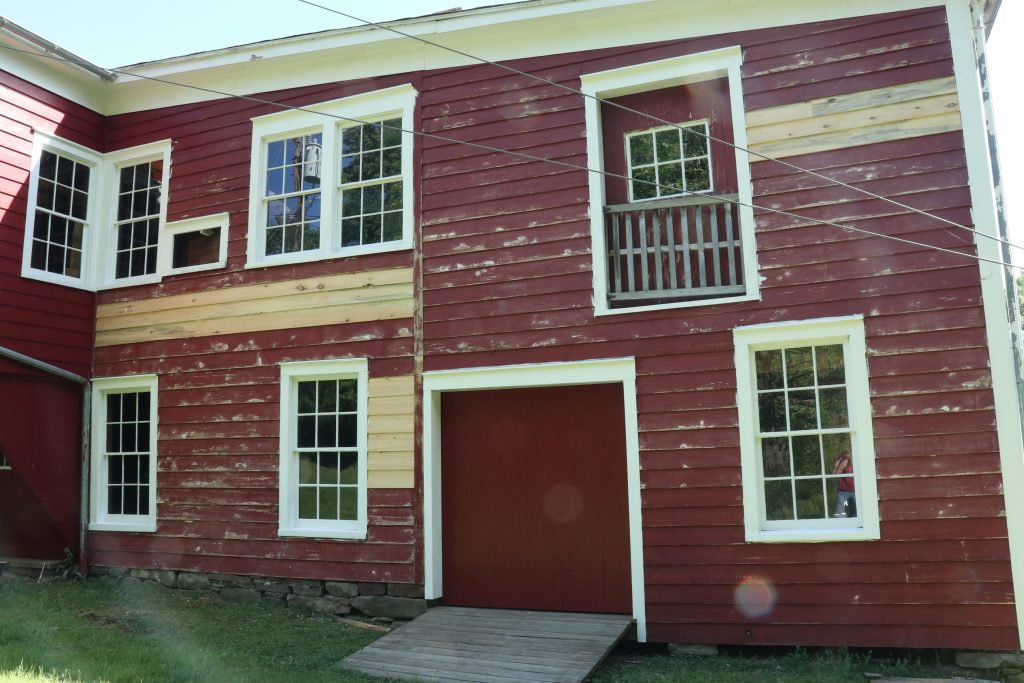
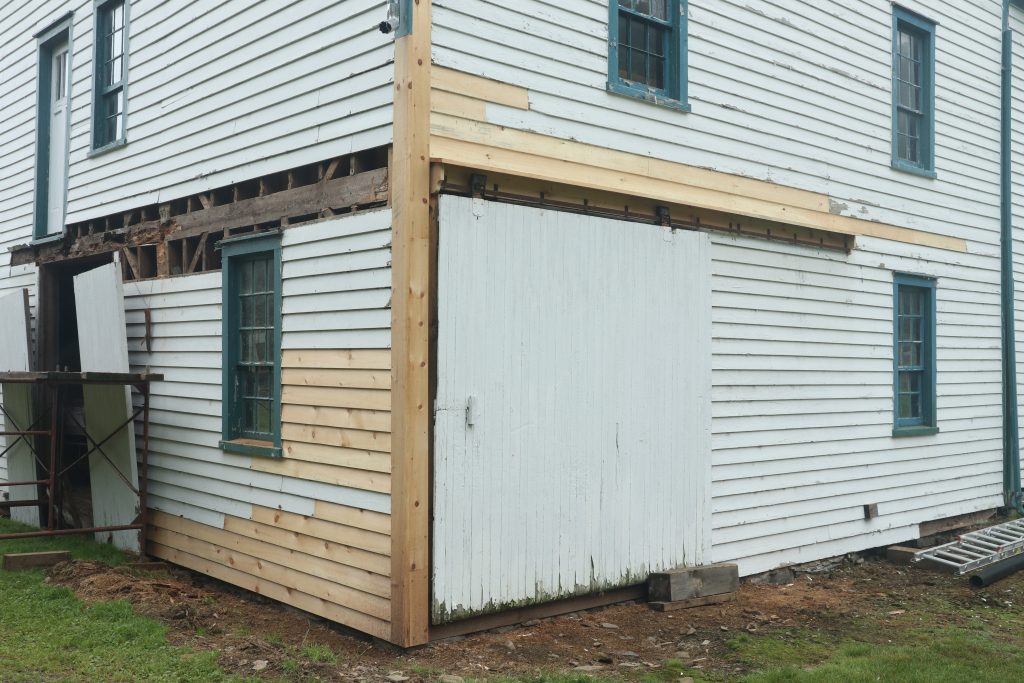
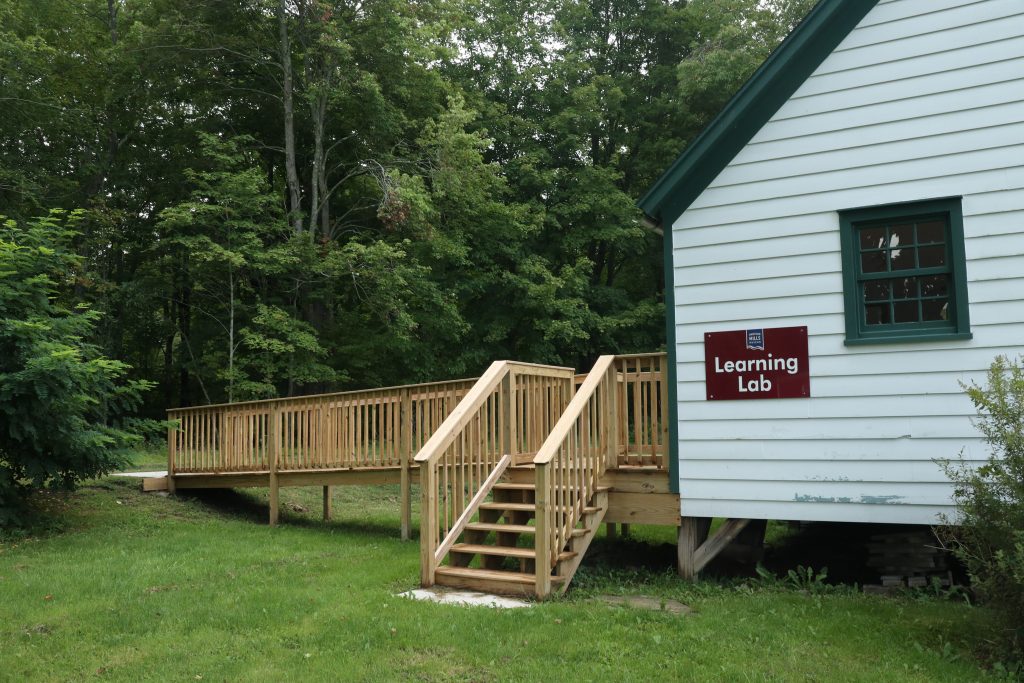
Collections Projects at Hanford Mills
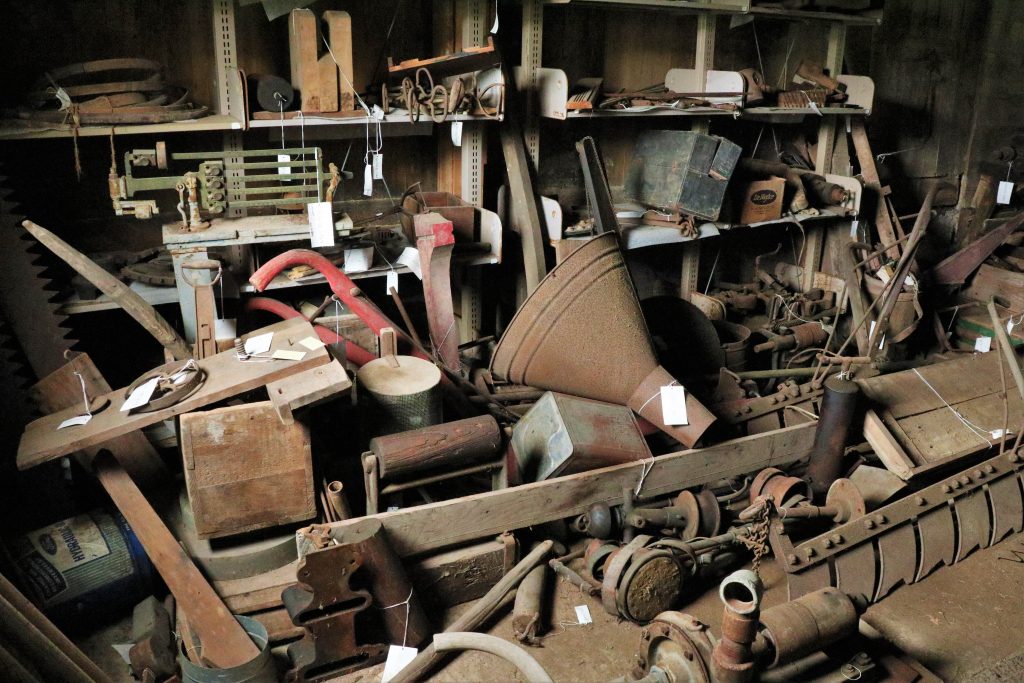
Kevin Jensen, Mill & Collections Specialist
Visitors to Hanford Mills Museum in recent years may have noticed small, numbered tags hanging from objects around the site. These are the most visible signs of the ambitious collections documentation project the museum began in 2016 with the museum’s first full-site inventory. This next stage of the project will be complete by 2026, leaving HMM with a fuller understanding of what we have and allowing us to better plan the future of the museum’s collections and its storage spaces.
An exploration of our collections quickly reveals an incredible variety of items, ranging from cast iron woodworking machines and farm implements to historic clothing and kitchenware. While many items have a historic connection to our site, others have been gifted to the museum over the past fifty years by generous donors. Taken together, the diverse objects in our collection do more than tell the story of Hanford Mills: they paint a vivid picture of the interconnected spheres of industry, agriculture, and domestic life in rural areas like Delaware County in the late nineteenth and early twentieth centuries.
The scope of our collections and limitations of our resources over the years meant that the museum has never had complete documentation of the items it owned and is mission-bound to preserve. Our multi-year collections project aims to address this. Supported by grant funding from the Institute of Museum and Library Services, museum staff, interns, and volunteers have spent countless hours cataloging over 50,000 objects found in the twenty structures on site. Now that everything has been cataloged and temporarily tagged with an identification number, we have begun the complex process of researching each object. When possible, we want to know where the object came from, who used it, and how and when it was used. Frankly, in some cases – such as with our more obscure machinery parts – it can be extremely difficult to figure out what the objects are!
Once we know more about an object, we’re able to determine what to do with it. The most unique and historically valuable objects are put into our permanent collection, where they are given the highest feasible levels of care and their handling is kept to a minimum to ensure their long-term survival. Objects that are going to be used for demonstration purposes, such as hand tools, are sometimes a better fit for our education collection, which allows more hands-on use. Keep an eye out for future issues of Millwork, where we’ll share some of the interesting objects and fascinating stories we discover as the project continues. In the meantime, we’ll keep investigating our collections, one tag at a time!

